NIL
Byrne Fires Back at Notion that Tide Doesn’t Care About Fans
Amid the constant changes in college athletics, fans can feel like they’re being left behind. While the SEC has done a better job of maintaining fan engagement, largely by making sure most of the games can be viewed without an extra subscription service, it’s more expensive than ever to be a college football fan. […]
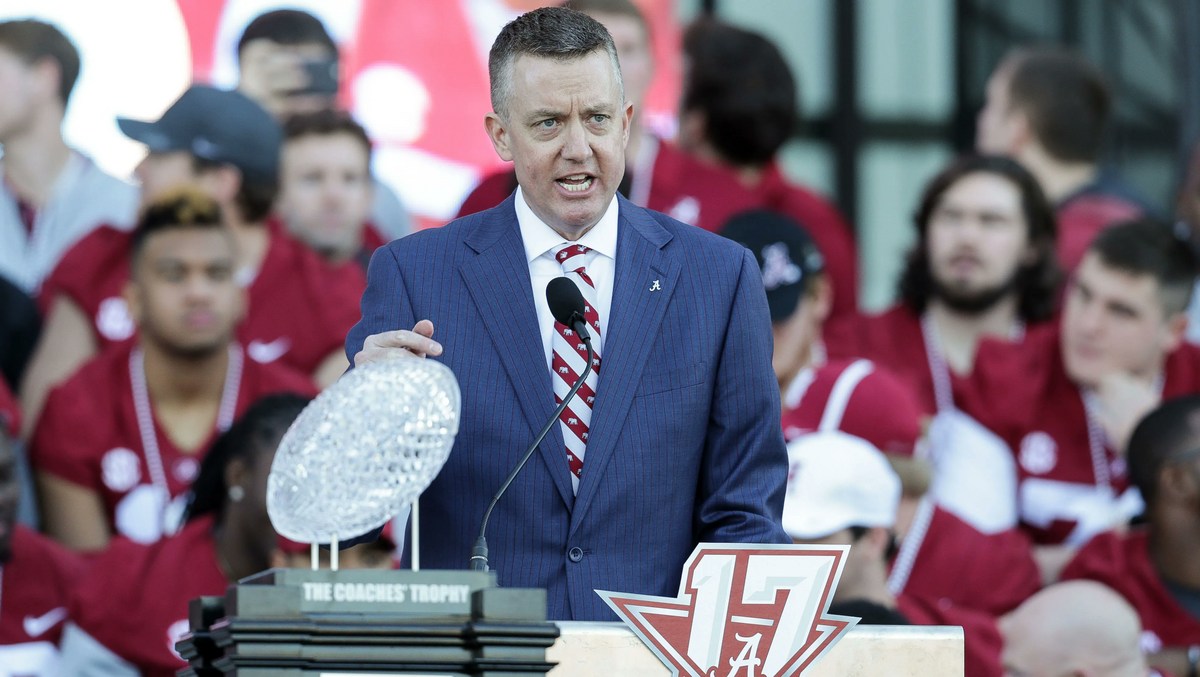
Amid the constant changes in college athletics, fans can feel like they’re being left behind. While the SEC has done a better job of maintaining fan engagement, largely by making sure most of the games can be viewed without an extra subscription service, it’s more expensive than ever to be a college football fan.

Without getting into politics, it’s the flat-out truth that it is more expensive than ever to attend a college football game if you don’t live in the city that your favorite team plays in. College football fans feel alienated by the constant demand for money to support their favorite team. Then on top of that, they’re being asked to donate more money to their school’s collective to “help with NIL” and the growing costs of college football rosters.
It can make fans feel like their favorite school doesn’t care about them, and Alabama athletic director Greg Byrne has faced that criticism in recent months. Byrne spent time on various radio shows and television networks asking Alabama fans for more donations to Yea Alabama, the Crimson Tide’s NIL collective. Fans took it as if Byrne doesn’t care about you unless you donate money to his athletic department.
That simply isn’t the case, however. On Tuesday, Byrne joined Greg McElroy and Cole Cubelic on Mac and Cube to discuss, calling the perceived lack of care for fans, ‘a bunch of hooey.’
“The fans are critical,” Byrne told the two former SEC stars. “I know sometimes people say the athletics department doesn’t care about fans. That’s a bunch of hooey. We may not charge the prices they want us to charge. I understand and appreciate the fact people are trying to make budgets work and be a part of things they’re interested in, which we’re fortunate we have so many fans at Alabama. We need to make sure we do everything we can to give them a good product out on the field and courts at the same time to give them outside the stadium from the time they get here to the time they get to their seats, hopefully it’s as efficient a process as possible.”
Byrne had spent time over the spring asking fans for more donations to Yea Alabama. According to Alabama’s Athletic Director himself, that has now changed thanks to the House v. NCAA Settlement from federal judge Claudia Wilkin. Fans giving to the collective will now be “very limited going forward,” according to Byrne. The collective will now convert into a content and marketing site.
Byrne said the Tide is constantly trying to evolve with what it provides to fans.
“We are trying to evolve with what the services that we offer to ur fans,” Byrne said. “At the same time, too, we have to make sure the fans understand why we are changing the way we did.”
Wyatt Fulton is the Tide 100.9 DME and Brand Manager, primarily covering Alabama Crimson Tide football and men’s basketball. For more Crimson Tide coverage, follow Wyatt on X (Formerly known as Twitter) at @FultonW_.
Alabama Thrashes LSU 42-13 in Death Valley
Gallery Credit: Wyatt Fulton
Alabama Football 2025 A-Day
Gallery Credit: Wyatt Fulton
Alabama is Upset by Michigan in 2024 Reliaquest Bowl
Gallery Credit: Wyatt Fulton
NIL
Unintended Consequences: NIL Money Is Gutting Euroleagues
You guys probably recall the surprise when we all learned just how much Cooper Flagg made this past season at Duke, around $28 million. He’s an outlier of course, but the trend is unmistakable: income is going up across the board. That’s a bit of problem and not just for the NCAA. Turns out it’s […]
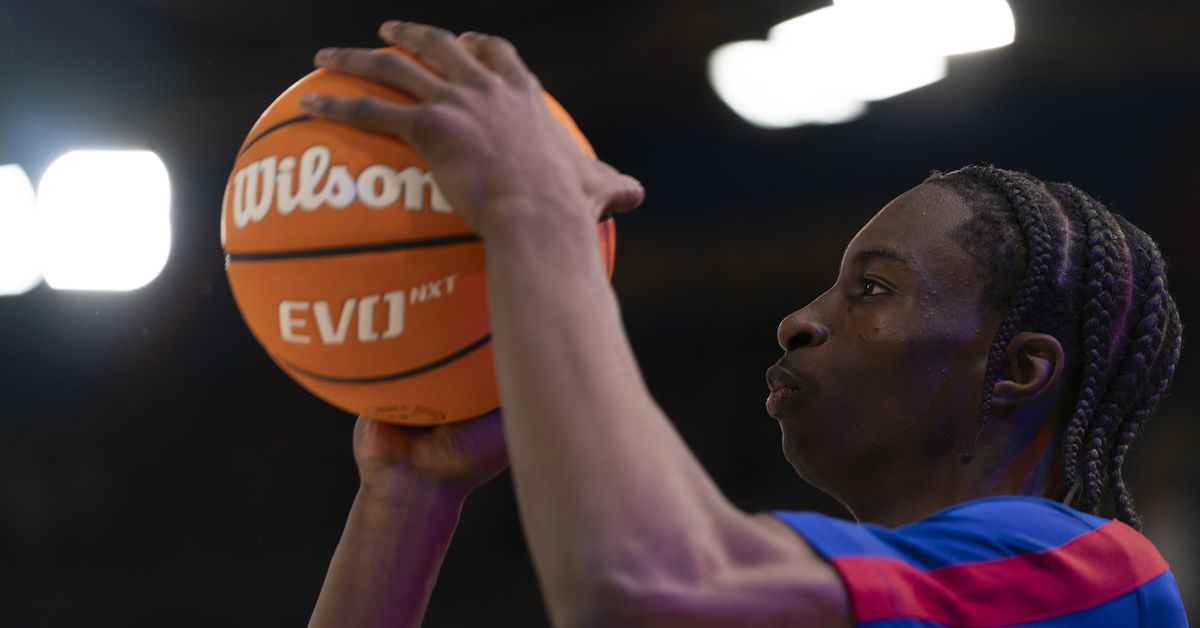
You guys probably recall the surprise when we all learned just how much Cooper Flagg made this past season at Duke, around $28 million.
He’s an outlier of course, but the trend is unmistakable: income is going up across the board.
That’s a bit of problem and not just for the NCAA. Turns out it’s causing a global…well, let’s call it a game drain.
What’s happening, in essence, is that NCAA players are suddenly making a lot more money than international players, and the employers of said international players don’t like it one bit.
Philippe Ausseur, the President of France’s National Basketball League, calls it looting, saying this:
“Given the number of players approached, about fifteen of whom have signed up, we can call it looting. The colleges are casting their net wide, even in Pro B, and are dispossessing us of a certain number of our key players without us being able to react.
“What took us by surprise were the amounts. We were expecting big contracts worth $350,000, but it’s $2 million…We were expecting half a dozen players to be approached, but it’s more than triple that…We’ve heard of agents trying to get clubs to sign certificates to demonstrate that their players are still amateurs. The situation remains unclear.”
Well first of all, looting seems like a very Gallic response to competition. Secondly, they didn’t complain when sub-NBA American players left college ball for European paychecks.
All that said, he does have a point: in a very short period of time, the NCAA has emerged as the second-best league in the world, the money keeps getting better and there are some real perks: you can get an education if you want, you get access to first-class coaching, facilities, training, nutrition and equipment. And you’re on TV all the time and thus on the NBA’s radar.
And while this appears to be less of a problem than it was in recent years, at least in Europe, there was a time when players spent way too much time trying to get paid. This has apparently been a problem for American players in China too. It’s less likely to be the case for NCAA players, which could also be a factor.
NIL
Table the expansion talk. The College Football Playoff should stay at 12 teams
Another day, another college commissioners’ meeting — and another conversation about potential College Football Playoff expansion that has ended without resolution. Or, as I like to put it, just your typical Wednesday in June. “Pretty much everything’s on the table and they’re taking a good look at all of it,” CFP executive director Rich Clark […]
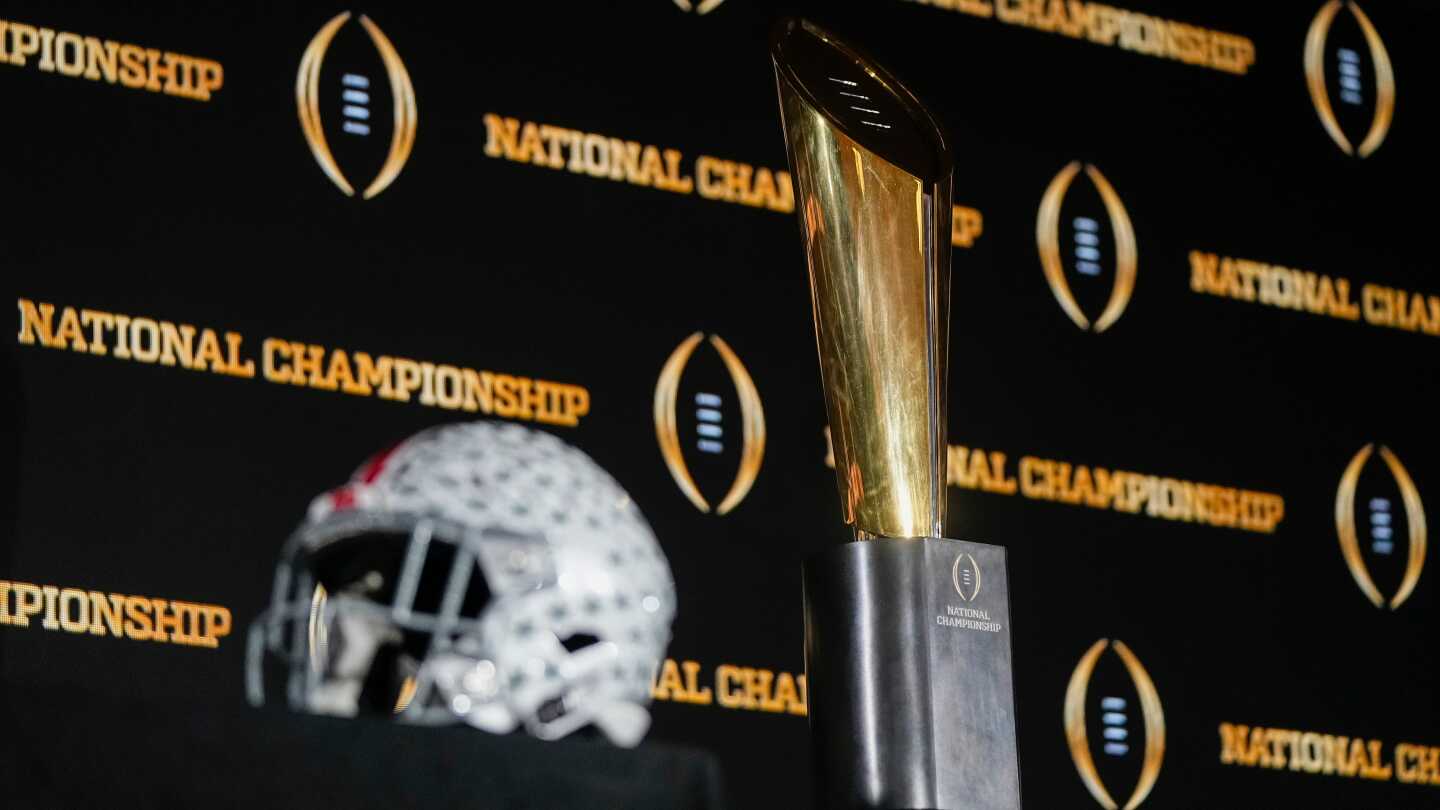
Another day, another college commissioners’ meeting — and another conversation about potential College Football Playoff expansion that has ended without resolution. Or, as I like to put it, just your typical Wednesday in June.
“Pretty much everything’s on the table and they’re taking a good look at all of it,” CFP executive director Rich Clark told reporters in Asheville, N.C. “So I wouldn’t say there’s a leading contender right now for them, but they’re taking a fresh look at it.”
Round and round we go on a topic that never seems to go away completely. Even though there’s an easy (if boring) solution: The CFP should stay as is — at 12 teams.
Now, I get why there’s always at least one loud voice clamoring to expand the field. College football is a sport that has crowned its champion by polls and by computer algorithm. There’s always been incredible interest in a playoff model, even when college football didn’t have one. Then we got a four-team bracket, approved in 2012 and implemented in time for the 2014 season. Just one year into the 12-team era, commissioners now demand further expansion.
Will Hunter play both offense and defense in NFL?
Lawrence Jackson Jr. discusses recent comments made by Jaguars general manager James Gladstone about Travis Hunter, sharing why the 22-year-old rookie will likely be a productive fantasy football wide receiver in 2025.
The Big Ten has pushed for a 16-team bracket with multiple automatic qualifiers (AQs) per league, with the Big Ten and SEC each nabbing four designated spots — the so-called 4-4-2-2-1 model, which grants them double the number of AQs of the ACC and Big 12 with one spot designated for the highest-ranked Group of 5 champion. The SEC stunned those in Big Ten circles with its coaches publicly pushing for a 5+11 model — one AQ per league and the Group of 5, with 11 at-large spots — at its spring meetings last month.
The SEC’s interest in the 5+11 model aligns well with what’s best for both the ACC and Big 12, two leagues that did not want to accept a model that essentially defined them as second-tier conferences.
The posturing and preening over the past month has left the sport in a messy spot. It’s also uncharted territory, because any format changes made for the 2026-27 season do not require unanimity. Changes do require the Big Ten and SEC to agree on them, though, and the relationship between the two is in a far more tenuous place than it was six weeks ago. Multiple sources in the Big Ten have told NBC Sports that the conference will not support the 5+11 model if the SEC remains at eight conference games. (The Big Ten plays nine.)
As the CFP expansion debate stretches further into the doldrums of the summer, even the Big Ten’s coaches are jumping into the fray.
https://x.com/NicoleAuerbach/status/1935104742679519328
It is quite possible that the current Big Ten-SEC standoff delays or stymies bracket expansion. Any format changes for the 2026-27 season need to be decided on and communicated to ESPN by Dec. 1.
But if the Big Ten and SEC can’t come to an agreement on a specific 16-team format by that date, the expectation is that the Playoff would simply move forward in its current iteration — with 12 total teams, including five conference champions and seven at-large selections.
And, frankly, that is the best possible outcome.
The 12-team CFP worked out exceptionally well in its first year. More teams had access to the sport’s premier postseason than ever before, which meant dozens of teams that previously would have been eliminated were still fighting for spots in the final weeks of the regular season. Increased access led to increased engagement by fans. First-round games on campus were as electric as we had hoped they would be. Even early round blowouts turned out to be a blessing in disguise, as they set up some great quarterfinal games and excellent, evenly matched semifinals.
Will NIL lead to players becoming ‘commodities’?
Dan Le Batard and the Shipping Container lay out some of the further-reaching effects of NIL at the college sports level, examining how youth sports can be affected and players risk being turned into ‘commodities’.
Even with just one season’s worth of data, it’s clear that there aren’t actually going to be 12 teams truly capable of winning a national title, that there are perhaps only six to eight built to get to the finish line. But it is obvious, too, that the very best teams in college football will fall within the 12 teams picked to participate year in and year out. Teams No. 13 or 14, on the wrong side of the cut line, were flawed teams that had lost to lesser opponents multiple times. The first team out of any field will always complain, but that exclusion felt far different from the Bowl Championship System era or even the four-team bracket days. In the past, we all worried that the best team in the country might not have a chance to play for a national championship. That’s no longer a fear in a 12-team world, because the buffer is so wide.
The only real problem with Year 1 of the 12-team CFP era was the way its convoluted seeding system worked — and that issue got fixed this offseason. Straight seeding 1-12 means a balanced bracket, and it also means that the four best teams (per the selection committee) are the four teams that get first-round byes. That is how the system should work, and it will give us more competitive, evenly matched early-round games.
The 12-team format worked well, and it’s going to work even better with straight seeding. But this sport’s leaders are impatient; they started discussing expanding beyond 12 teams before a single CFP game was played last winter. They assume bigger is better just because. Their bloated leagues need more access points, so they like the idea of 16 more than they do 12, even if the status quo is a pretty great solution to the problems that have ailed college football. The current format is fundamentally fair, and it will help the sport continue to evolve from its regional roots to its status as a national behemoth.
Ultimately, the Big Ten and SEC will surely figure out a way to work together again. The current standstill may just be a momentary (fortuitous?) blip. But while we’re here and while we’re paused, I hope the sport’s leaders take a second to look around. The grass isn’t always greener someplace else. Sometimes, it’s best to stay put.
NIL
Michigan introduces bill to ban reporting NIL deals to NCAA, stop schools from assisting in investigations
The newly approved House settlement has created fallout throughout the college sports world. Now, the state of Michigan has seen a bill introduced that would potentially target part of the agreement that revolves around reporting NIL deals with the NCAA and investigating those deals. House Bill No. 4643 was introduced by Reps. Tate, Herzberg, and […]
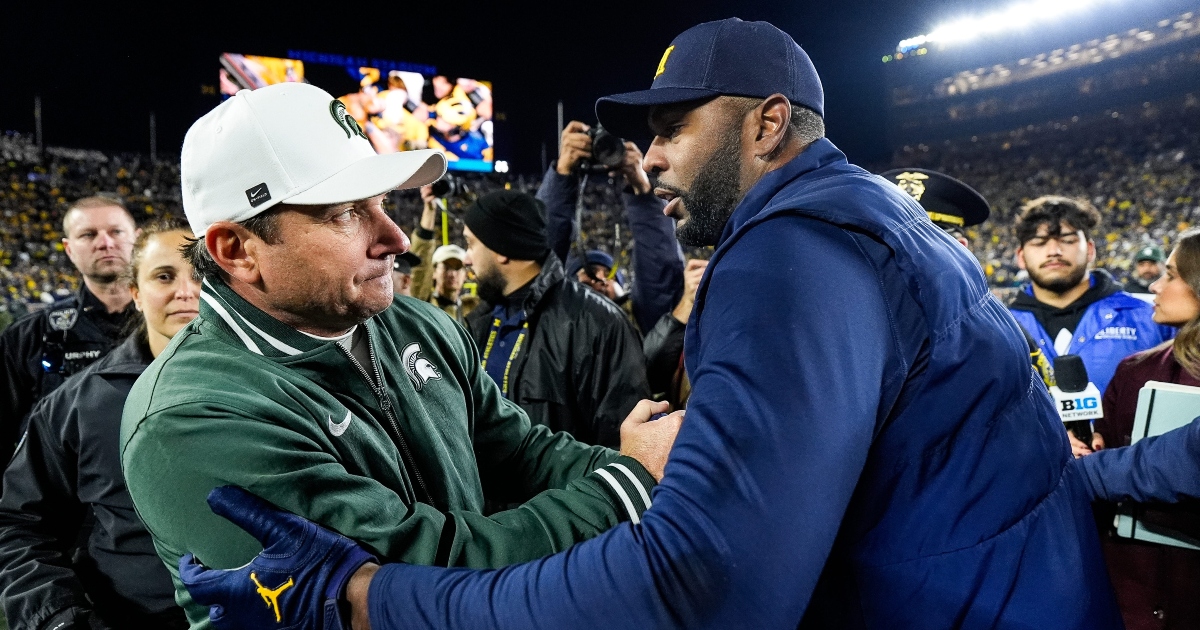
The newly approved House settlement has created fallout throughout the college sports world. Now, the state of Michigan has seen a bill introduced that would potentially target part of the agreement that revolves around reporting NIL deals with the NCAA and investigating those deals.
House Bill No. 4643 was introduced by Reps. Tate, Herzberg, and Rheingans last week. In it, the bill would completely ban reporting deals to the NCAA. On top of that, it would also prohibit schools from assisting in any investigation and ban athletic associations from penalizing athletes or schools for non-compliance.
While the House settlement was largely known as the settlement that would allow for revenue sharing, there’s more to it than just that. Among the other agreements in it to try and shape the future of college athletics was that NIL deals above $600 will need third-party approval. To do that, those deals are going to be sent to a new clearinghouse called NIL Go. Deloitte is set to oversee the fair compensation ranges for that.
From there, the House settlement also established a new enforcement agency called the College Sports Commission. It would be their job to handle those investigations into improper deals done outside the system that the settlement is seeking to establish.
Both the third-party approval and the new enforcement agency would be directly affected by this bill if it were to be passed and signed into law. This comes in a state with five FBS programs. That includes two Big Ten schools, Michigan and Michigan State. The Wolverines, of course, have won a national championship as recently as the 2023 season.
Notably, earlier in the year, the ACC, Big 12, Big Ten, and SEC each presented their member institutions with affiliation agreements. That would prevent universities from using state laws to violate the new enforcement rules. The price for not signing on to those affiliation agreements could be steep as well. In essence, a school risks the loss of conference membership and participation against other power league programs. It’s a tactic those conference administrators have used to, hopefully, enforce the House settlement regardless of laws.
Michigan bill shares similarities with similar bill in Tennessee
In May, Tennessee Gov. Bill Lee signed S.B. 536 into law. Considered by many to be a very athlete-friendly law, it shares some unique similarities with the one that is being brought forward by representatives in Michigan.
In it, the law states that Tennessee schools will be able to receive dollars from collectives unless told otherwise by federal law, a valid court order or antitrust laws. On top of that, it made it so the NCAA can’t create anticompetitive restrictions. Furthermore, that law sought to protect schools from any potential further legal disputes.
That amounts to, like the bill in Michigan, a pushback on the House settlement. In particular, they both appear to prohibit all of the House settlement’s limits on NIL compensation. On top of that, they both create protections for schools from investigators.
What comes next in Michigan remains to be seen. The bill will need to be passed and signed into law before the fallout can be entirely felt. It also remains to be seen if other states are going to follow suit with similar laws.
NIL
International big men who withdrew from NBA Draft present another opportunity for Indiana – The Daily Hoosier
With the addition of Serbian guard Aleksa Ristic this week, Indiana showed us they aren’t finished building the 2025-26 roster, and they aren’t opposed to going the international route to add missing pieces. At his most recent public appearance in late May, head coach Darian DeVries acknowledged his team was undersized at the five and […]
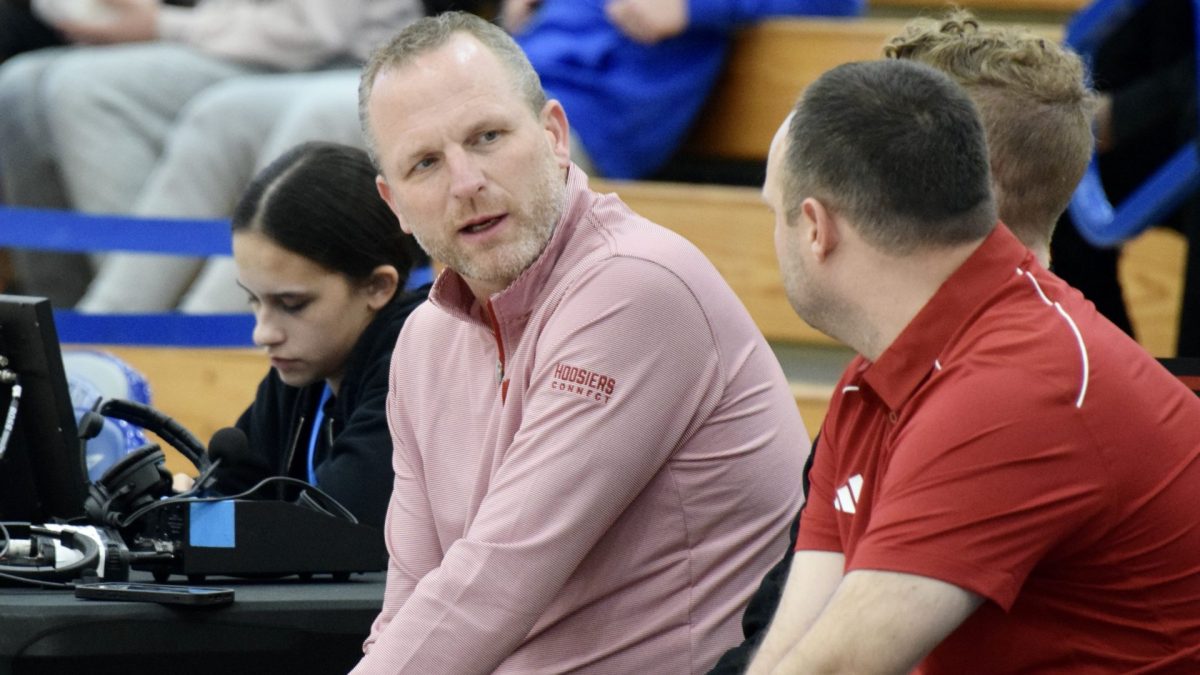
With the addition of Serbian guard Aleksa Ristic this week, Indiana showed us they aren’t finished building the 2025-26 roster, and they aren’t opposed to going the international route to add missing pieces.
At his most recent public appearance in late May, head coach Darian DeVries acknowledged his team was undersized at the five and would likely have suboptimal rim protection as a result.
But he also said his staff was still recruiting.
Since then there have been at least two recent international big men who both withdrew from the NBA Draft and have expressed interest in the NCAA route.
While the extent of any mutual interest is unclear, they are with a mention.
Senegalese center Momo Faye immediately became one of the more intriguing prospects when he took his name out of the draft. The 6-foot-10 Faye was recently measured and has a 7-foot-4 wingspan.
Faye averaged nine points, 6.8 rebounds and 1.5 blocks on 65.3% shooting from the field in 47 games with Reggio Emilia in the Italian League last season.
Jonathan Givony of ESPN said recently the 20-year-old Faye is evaluating both his international and NCAA options.
Paul Mbiya clearly has some degree of interest in college basketball, having already signed with North Carolina State. But on Wednesday Mbiya asked out of his agreement at that school.
The 6-foot-11, 260-pound Mbiya committed and signed with the Wolfpack last month after he dominated with ASVEL in the France-ProA U21 league this past season. He averaged 15.5 points with 11.6 rebounds, 3.1 blocks and 1.1 steals in 32.5 minutes a game across 23 contests.
Mbiya has been reported to have a 7-foot-7 wingspan.
In need of length and rim protection, Indiana no doubt has awareness of both Faye and Mbiya, and an intriguing opportunity exists in Bloomington should they choose to aggressively pursue either player.
With revenue sharing and NIL, college programs are now in effect competing with international clubs for talent. And the trend of young talented foreign players coming to U.S. colleges is rapidly expanding.
FIBA is now pushing for a mandatory Letter of Clearance for international players transferring to the NCAA, arguing that U.S. colleges now operate like professional clubs and should fairly compensate the European system that developed these young athletes. But for now the trend is only growing.
There are other prominent international big men who withdrew from the NBA Draft like 6-foot-10 Bassala Bagayoko, who plays in Spain, and 6-foot-11 Lazar Gacic, who plays in Serbia. To this point there hasn’t been any public reporting of either of them having interest in the NCAA route. But with attractive opportunities in U.S. college basketball, one can never be sure.
Related
NIL
Matt Rhule reveals how Nebraska will approach walk-ons after roster limits take effect
Throughout Nebraska football’s history, walk-ons have been an important part of the program. The Cornhuskers have traditionally carried a larger roster with non-scholarship players – but things could be changing in the new college football landscape. Roster limits are coming to college athletics, and that number will be at 105 for football. That creates uncertainty […]
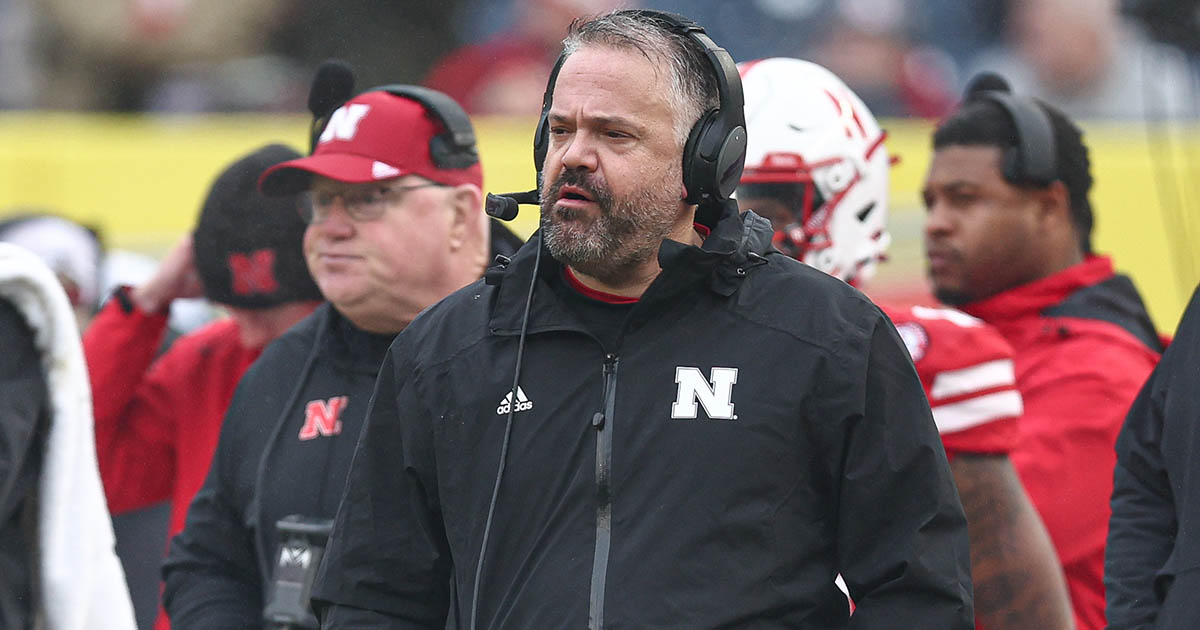
Throughout Nebraska football’s history, walk-ons have been an important part of the program. The Cornhuskers have traditionally carried a larger roster with non-scholarship players – but things could be changing in the new college football landscape.
Roster limits are coming to college athletics, and that number will be at 105 for football. That creates uncertainty around the future of walk-ons, and Matt Rhule has been outspoken about their importance to not only Nebraska, but the sport as a whole.
Now that the House v. NCAA settlement has full approval, roster limits will be on the way. Rhule weighed the impact it can have on the sport and confirmed Nebraska will still find a way to carry walk-ons and maintain that proud tradition.
“I know people here at Nebraska, we don’t love the fact that we can’t carry the larger roster, which has been part of our culture,” Rhule told Greg McElroy on Always College Football. “But we won’t get rid of it all together. We’ll still take some walk-ons. It’ll be, maybe, a little bit harder.
“But I hope those kids that would’ve walked on here, now, they’re at other schools in the Dakotas, the FCS schools in the Midwest and really elevate that level of football.”
Matt Rhule does not ‘love’ roster limits
As the House v. NCAA settlement went through the final approval process, uncertainty swirled – specifically for athletes who could have lost spots on rosters as a result of the new limits. However, the final agreement included a provision to “grandfather” spots for those athletes at schools’ discretion.
In the meantime, as rosters begin to downsize, Matt Rhule said the non-power conferences could see a boost in talent. That includes non-FBS programs, as well as those in Division II and Division III. It could create parity, although Rhule said he’s still skeptical about the idea of roster limits.
“On the positive side, you’re hoping that it pushes more really good players into positions of success at the Group of 5 level, FCS, Division II, Division III and downward,” Rhule said. “Sitting on the bench for four years at a school where you’re not going to play, maybe you’ll go somewhere and play.
“I don’t love the roster limit, I think we’re always looking for ways to create parity that aren’t really real. I would much rather just say, hey, this is the amount of guys that can dress on game day. But that was the rule. We’re going to stick to it.”
NIL
Is Oregon’s NIL and Recruiting Ahead of Everyone?
Oregon is getting beat on the recruiting trail pretty badly this off-season. It’s been ages since the program has had a major win. It appears that Dan Lanning and Oregon’s main NIL cooperative, Division Street, may be changing their strategy, with a greater focus on spending NIL dollars in the transfer portal rather than on […]

Oregon is getting beat on the recruiting trail pretty badly this off-season. It’s been ages since the program has had a major win. It appears that Dan Lanning and Oregon’s main NIL cooperative, Division Street, may be changing their strategy, with a greater focus on spending NIL dollars in the transfer portal rather than on high school recruits. Mr. FishDuck took a break from figuring out his betting payouts on the expected value calculator–to express his concern as many Duck fans have.
At this point in the year, this can feel like a good explanation for Oregon’s recruiting woes, but the reality is that Oregon doesn’t like to get in bidding wars concerning NIL allocation until December, right before the early signing period. For the most part this strategy has worked for the Ducks and this likely explains what is happening right now regarding Oregon’s recruiting woes.
The Ducks and Division Street refuse to get into a bidding war this early in the recruiting cycle and are continuing to recruit many of these committed athletes. However, if some of these NIL deals hold to the end of the cycle, the Ducks may be left with a small prep recruiting class, and thus a change in strategy is prudent.
USC and Others Are Spending Money Like It’s 2022
Through this recruiting cycle so far, some programs have gotten more active in NIL and they are playing the game like it is 2022. USC, for instance, seems to be throwing millions at recruits right now, and according to Athlon Sports, their NIL cooperatives are going to pay Mater Dei tight end Mark Bowman $10 million to come and play at USC — more than most NFL tight ends make, let alone rookies.
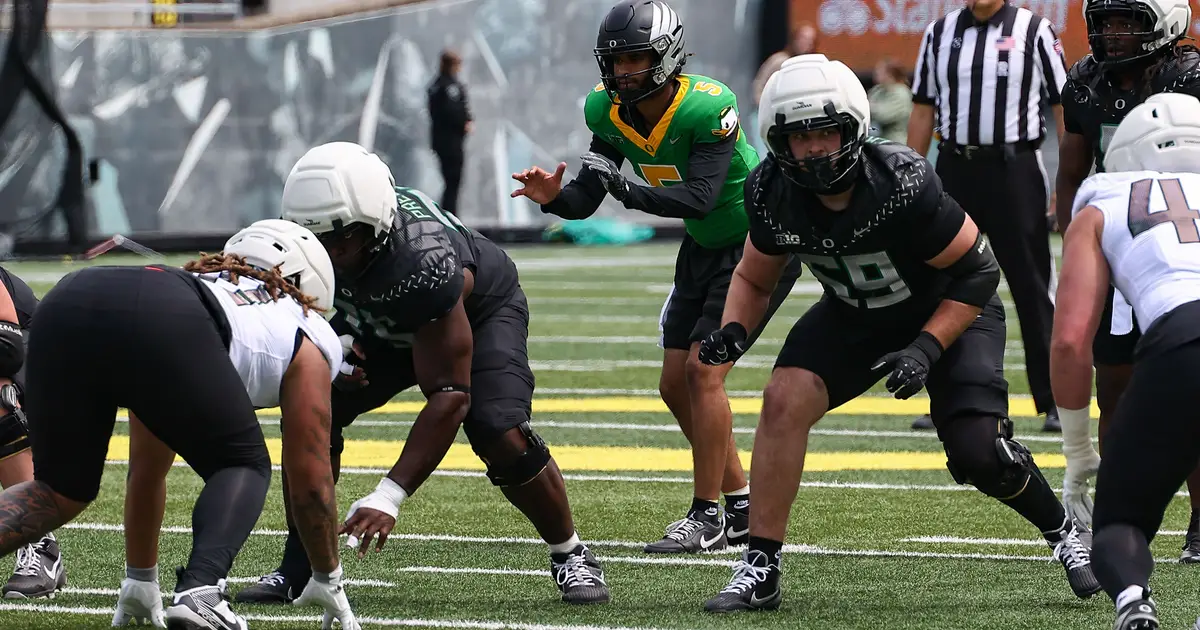
Emmanuel Pregnon (left) lined up at left guard during the Oregon Spring Game. (Photo By: Gary Breedlove)
There are also reports of absolutely insane requests being made by recruits this cycle, like charted flights for their families to all their games and leases on luxury vehicles. There are also reports of recruits being paid to just commit and stay committed.
And we have already seen this story before. In 2022, Texas A&M spent by far the most on their No. 1 recruiting class, and that class failed to save Jimbo Fisher’s job and has since imploded. Furthermore, Tennessee signed Nico Iamaleava in 2023 to a multi-million dollar contract, and his on-field results have been underwhelming for a price tag that high. He transferred out of Tennessee when he failed to leverage the program’s NIL for more money.
USC’s NIL cooperatives have woken up and are spending money like it’s 2022. And they are recruiting like it too. They are buying their recruiting class without learning from the history of how this has played out in the past. I don’t blame a high school recruit like Bowman for taking that payout — that is enough money to set him up for life.
But what is also clear is that USC is not spending enough of their NIL resources on maintaining their roster. Otherwise, they never would have let their best lineman, Emmanuel Pregnon, transfer out and go to Oregon.
Lanning and Division street are too savvy to play this NIL game and as a result, they are possibly changing their strategy.
Using All of College Football as a Feeder League
Focusing on the transfer portal to fill holes in the roster with proven recruits is a better way of spending Oregon’s NIL money. However, this strategy shift only works because Lanning has proven that he can go into the portal and effectively get whomever he wants, including two of the most coveted positions out of the portal, offensive and defensive linemen.
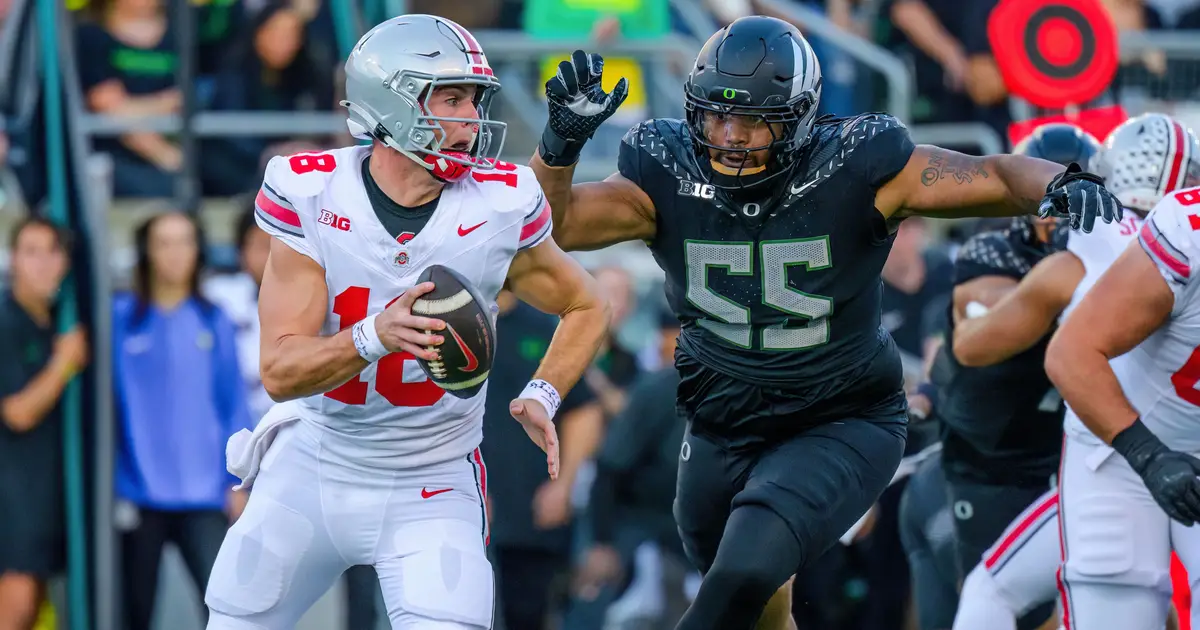
Derrick Harmon puts fear into Ohio State quarterback Will Howard in October 2024. (Photo By: Eric Becker)
Ajani Cornelius was the best offensive lineman of 2023 in the transfer portal, and Ohio State was pushing for him before he settled on Oregon. He was developed at Oregon and drafted in the sixth round of this year’s NFL draft. Additionally, Derrick Harmon transferred from Michigan State to Oregon in 2024 and certainly elevated his draft stock. He was still likely to be drafted if he stayed at Michigan State, but in transferring to Oregon, he elevated his skills to where he became a first-round pick.
Outside of offensive and defensive line positions, Lanning and his staff has proven they can develop transfer players into draft picks. Bo Nix is probably the poster child for this. He was unlikely to be drafted at all if he stayed with Auburn, but in his two years at Oregon, he boosted his stock enough that he was taken No. 16 overall and had a fantastic rookie season with Denver.
This point was emphasized by one of the best safeties in the 2025 transfer portal, Dillon Thieneman, when he explained why he chose Oregon: “I saw that Oregon’s really good at taking in transfers and developing them and transitioning them to the next level.” With this reputation, Lanning gets almost anyone he wants out of the portal.
This all emphasizes the difference between recruiting the transfer portal instead of high schoolers. For transfer portal recruits, their priorities tend to be fair pay via NIL, a chance to compete at the top of college football, and the opportunity to elevate their draft stock — all of which Oregon can provide.
This means Oregon can rebuild every year with the best players from other teams who are proven college talent. Just on the offensive line, this year Oregon landed: Alex Harkey from Texas State, Isiah World from Nevada, and Pregnon from USC. All of these linemen were huge gets for Oregon, as they were some of the best linemen in the portal.
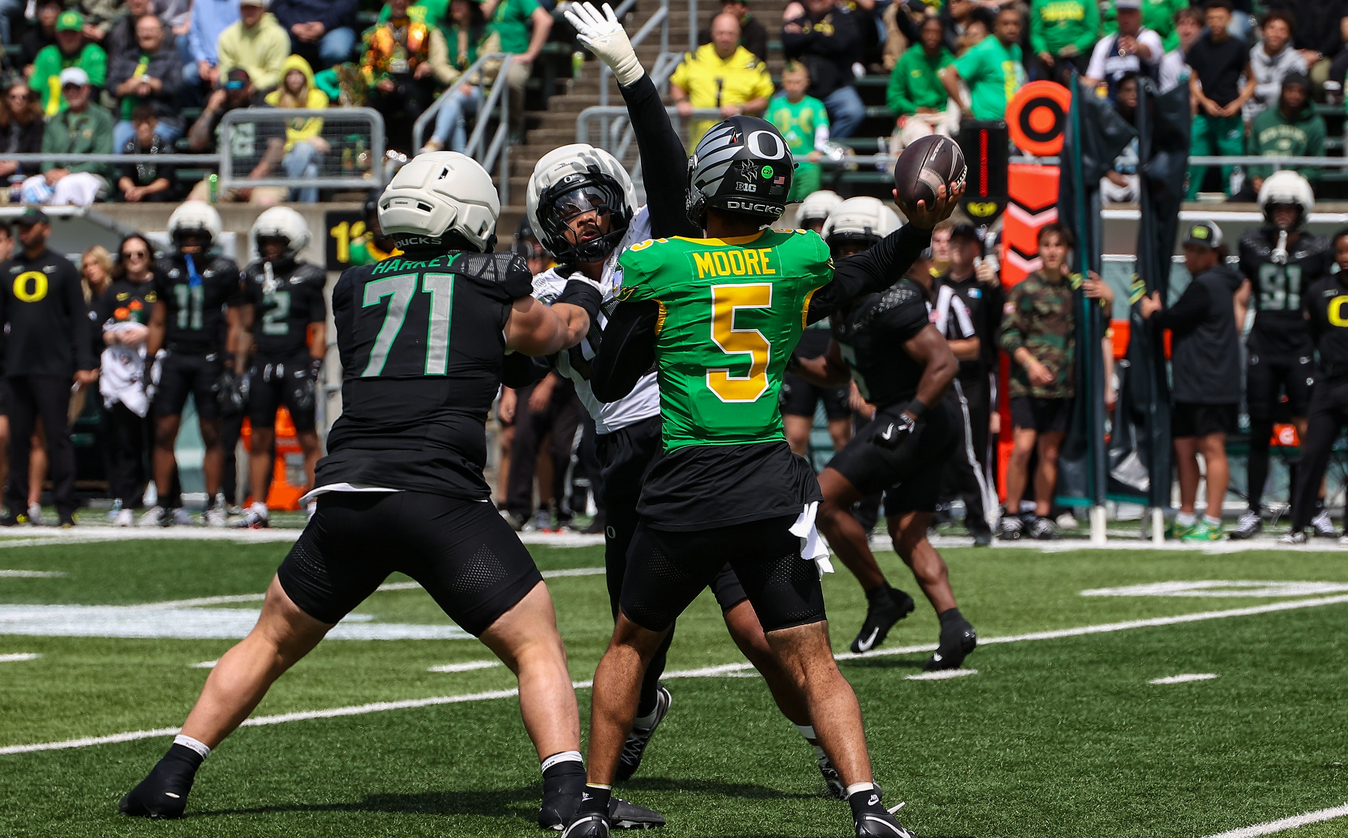
Alex Harkey protects Dante Moore in the Spring Game. (Photo By: Gary Breedlove)
In addition to adding Thieneman from Purdue, Oregon landed another defensive back from a B1G team, Theran Johnson from Northwestern. On the face of it, neither of these players come from teams at the top of the B1G as both are typical conference basement dwellers. However, Oregon picked up two experienced players who were perhaps the best players on their former teams.
Oregon is using the rest of college football as feeder programs, not unlike Ohio State and other major programs. They are letting other programs develop diamonds in the rough and then taking them once they hit the portal, continuing their development, and elevating them to the next level.
The position Oregon is in has become highly unique at this stage of the transfer portal. Oregon can supplement their roster with the best players from teams all over the country, including the B1G and SEC. Oregon is able to treat the majority of the college football programs as feeder programs. These teams bring in undiscovered talent that they develop, and then Oregon and other top tier programs take from the transfer portal and polish them into higher NFL draft picks.
Oregon does this at a far more sustainable and reasonable NIL cost than the method many other college football programs are taking this year. Is this what Oregon is doing, or am I outright sunshine pumping Oregon’s transfer recruiting while the Ducks continue to struggle with prep recruits?
David Marsh
Portland, Oregon
Top Photo By: Gary Breedlove
 Andrew Mueller, the FishDuck.com Volunteer Editor for this article, works in higher education in Chicago, Illinois.
Andrew Mueller, the FishDuck.com Volunteer Editor for this article, works in higher education in Chicago, Illinois.
Share your thoughts about this team in the only free, “polite and respectful” Oregon Sports message board, the Our Beloved Ducks forum!

David Marsh is a high school social studies teacher in Portland, Oregon. As a teacher he is known for telling puns to his students who sometimes laugh out of sympathy, and being both eccentric about history and the Ducks.
David graduated from the University of Oregon in 2012 with Majors in: Medieval Studies, Religious Studies, and Geography. David began following Ducks Football after being in a car accident in 2012; finding football something new and exciting to learn about during this difficult time in his life. Now, he cannot see life without Oregon football.
-

 High School Sports2 weeks ago
High School Sports2 weeks agoParents Speak Out As Trans Pitcher Throws Shutout In MN State Quarterfinals
-

 Professional Sports2 weeks ago
Professional Sports2 weeks ago'I asked Anderson privately'… UFC legend retells secret sparring session between Jon Jones …
-

 College Sports3 weeks ago
College Sports3 weeks agoIU basketball recruiting
-

 Health2 weeks ago
Health2 weeks agoOregon track star wages legal battle against trans athlete policy after medal ceremony protest
-

 Professional Sports2 weeks ago
Professional Sports2 weeks agoUFC 316 star storms out of Media Day when asked about bitter feud with Rampage Jackson
-

 High School Sports3 weeks ago
High School Sports3 weeks agoThe Arizona Daily Star's top high school athletes, coaches and moments of the 2024
-

 Rec Sports2 weeks ago
Rec Sports2 weeks ago2x NBA All-Star Reacts to Viral LeBron James Statement
-

 NIL3 weeks ago
NIL3 weeks agoNCAA Sends Clear Message About Athlete Pay and Roster Limits
-

 NIL2 weeks ago
NIL2 weeks agoMen's college basketball Top 25 reset
-

 Social Media2 weeks ago
Social Media2 weeks agoControversial Athletics Gender Dispute Goes Viral After Riley Gaines Lashes Over Authorities































